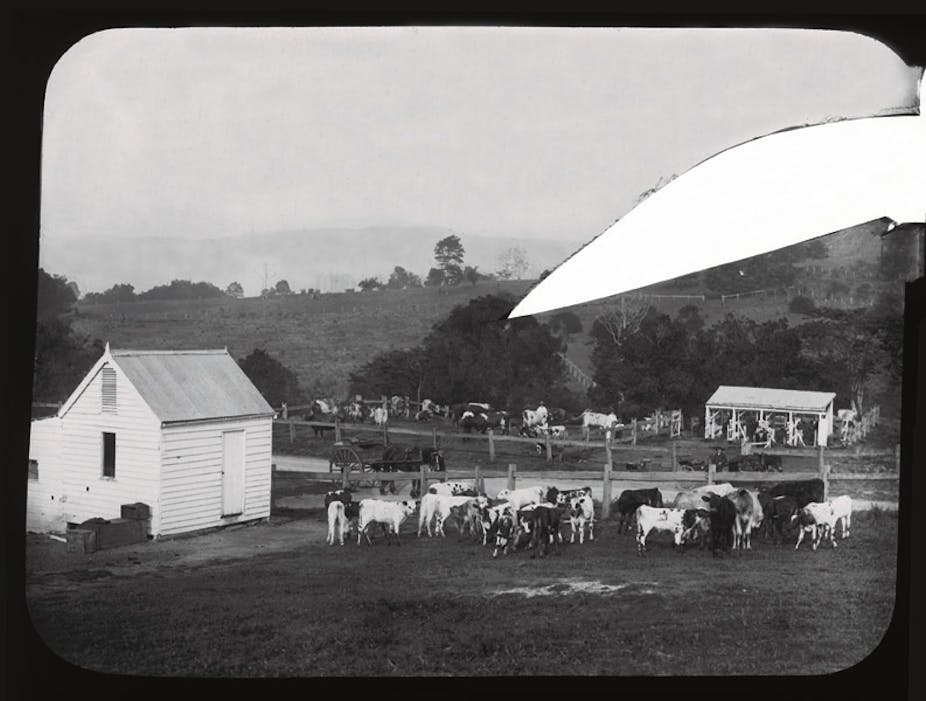It has once again been left to an advocacy group, Animals Australia, to highlight the cruel practices involved in cattle slaughter in Indonesia. Under new rules put in place by the Federal Department of Agriculture following last year’s exposé, exporters must employ auditors to monitor the slaughter. However, recently released footage shows that some of these auditors either did not detect the clear mistreatment of cattle or they failed to act.
Now that the issues have been highlighted by the advocacy group, the department has recommended disciplinary action for the two exporting companies involved. This has prompted claims by the live exporters that the system is working.
It is correct that the new system has allowed the suppliers to be identified and disciplined once the abuse was revealed, which was not possible before the new regulations. However, the failure to detect problems is concerning. It brings into question whether auditors paid for by exporters can be impartial.
My research group has recently identified that scientists reporting of animal welfare research is influenced by the funding of the research (see page 25). So if scientists, why not auditors?
This recent episode demonstrates that the effectiveness of the auditors in ensuring the welfare of the animals depends not only on their willingness to report incidents, but also on the standards they are given to implement. The World Health Organisation standards do not mandate some practices - such as stunning - that are essential for good welfare, so it is unlikely that they will satisfy Australian consumers.
The welfare of live export animals can be inadequate at many different stages in the export process, not only at slaughter. Mustering cattle, trucking them long distances, loading them onto a ship, rough sea journeys, high temperatures and accumulation of ammonia on ship are just some of the hazardous components of the journey.

The animal’s resistance to stress can become weakened after a long period of transport, and the new and strange experiences that they have. However, it is the cumulative effect of multiple stresses that is often forgotten. Evaluated individually each one may be acceptable, but together they may represent hardship that the cattle are unable to bear.
Australian meat consumers generally have a good impression of cattle production systems here. The freedom to roam and a natural system of feeding on pasture are just two of the advantages that are important for welfare. Intensifying the system by feedlotting and prolonged transport to slaughter could damage that image. Live export cattle are shipped in large numbers in unnatural conditions, ending up in feedlots or an abattoir, all far from the community perspective of cattle happily grazing in paddocks.
Over the nine thousand years that we have managed cattle, they have become docile animals. They have developed a willingness to accept a range of conditions, even if they are not conducive to good welfare.
Our willingness to accept poor welfare standards is largely driven by how much we can afford to spend on our animals. When one of the richest countries in the world, Australia, exports animals alive to one of the poorest, Indonesia, it is likely that the change in standards will cause issues with the Australian community. We must safeguard the natural image that Australians have of cattle production in this country, because if it becomes tarnished with the factory farming brush consumers will turn away from the products.
Intensification of cattle farming systems is progressing rapidly overseas. Having just returned from looking at new housing systems for cattle in Estonia, it is clear that the globally increasing demand for milk and beef is encouraging an unprecedented growth in the scale of individual enterprises that is often at the expense of the animal’s welfare.

Eastern European countries became accustomed to industrial scale farms during the Communist era. Now new dairies are being established, each with several thousand cows. There is no support for small farming systems, like those common in Western Europe. Cows are never allowed onto pasture and are loose housed in barns, where they used to be tethered. They are milked by robots and live on wet concrete covered in excreta. This, together with being offered only small concrete cubicles with little bedding to lie down in, increases lameness and mastitis, which are two of the biggest causes of wastage of dairy cows.
Diets that promote high milk yields take their toll all too quickly. On average cows only last 2.5 years in the milking herd, which together with the two year rearing period offers cows a pitifully short lifespan compared with their natural lifespan of 20-25 years.
Some Western European countries are attempting to control the intensification of cattle production systems, knowing that they have consumer support. In Sweden and Finland cows have to be out at pasture during summer. If cows are given a choice, farmers find that in all but the most inclement of weather they opt to spend their time outside.
The treatment of cattle solely as a means to make money, whether by exporting them to Indonesia or keeping them in milk producing factories, ignores the fact that they are sentient beings. They are capable of all of the major emotions that we experience: fear, anxiety, depression, frustration, anger, love, hatred. The caring relationship of the cattle producer for the animals in his herd can be diminished by intensive systems, because there is little contact with the animals.
Industrialisation of cattle production systems to generate wealth is likely to ultimately lead to their failure. Competition from alternatives has never been stronger, and the ethical and environmental implications of industrialisation of cattle production are considerable. Tasmania, and many other states and countries worldwide, have realised that consumers will not support industrial scale agriculture that does not afford high welfare to animals, as they outlaw the battery farming of chickens and keeping of sows in stalls. Surely we should treat cattle with the dignity that they deserve, which is more than just being a means of making money?

